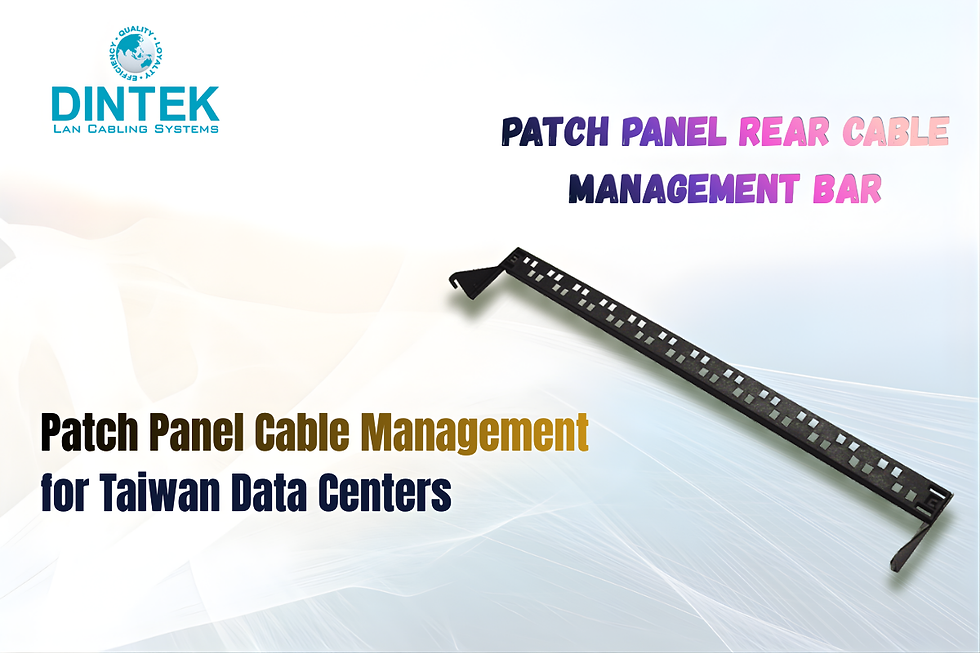Why Fiber Optic Cables Are the Backbone of Modern Networks
- dinteklancabling
- Sep 24, 2024
- 3 min read
In today's digitally connected world, fast and reliable communication is crucial for everything from personal use to business operations. The backbone of this communication is often hidden from sight, running through cities and across countries, silently carrying vast amounts of data. One technology that plays a critical role in enabling this high-speed connectivity is fiber optic cables. These slender glass or plastic strands are transforming the way networks operate, making them faster, more efficient, and capable of supporting the data demands of modern society.

The Evolution of Network Infrastructure
In the early days of networking, copper cables were the standard for data transmission. While effective for shorter distances and smaller amounts of data, copper cables face limitations such as signal degradation over long distances and interference from electromagnetic signals. As data requirements grew with the rise of the internet, cloud computing, and high-definition video streaming, it became clear that copper would not be able to meet the increasing demands. This led to the development and widespread adoption of fiber optic cables, which have since become the foundation of modern network infrastructure.
What Makes Fiber Optics Different?
Fiber optic cables transmit data as light signals, rather than electrical signals like copper cables. This key difference allows fiber optics to provide several advantages that make them ideal for modern networks.
High Bandwidth: Fiber optic cables can carry significantly more data than copper cables. This high bandwidth is essential for today's data-heavy applications, including video conferencing, online gaming, and cloud-based services. Fiber optic networks can support speeds of up to 100 Gbps and beyond, making them future-proof for even more demanding technologies like 5G and the Internet of Things (IoT).
Longer Distances: Unlike copper cables, which experience signal loss over long distances, fiber optic cables can transmit data over much longer distances without degradation. This makes them ideal for connecting data centers, spanning large campuses, or even interconnecting cities and countries through undersea fiber optic cables.
Low Latency: With data transmitted at the speed of light, fiber optic cables offer extremely low latency, critical for real-time applications like online gaming, video conferencing, and financial transactions where every millisecond counts.
Immunity to Interference: One of the significant drawbacks of copper cables is their susceptibility to electromagnetic interference, which can cause data loss or corruption. Fiber optic cables, conversely, are immune to this type of interference, ensuring that data is transmitted clearly and without interruption, even in environments with high levels of electromagnetic noise.
Fiber Optics and the Future of Networking
As the world becomes more connected and data-intensive applications continue to emerge, fiber optics will play an even more prominent role in supporting these advancements. Technologies like 5G, autonomous vehicles, and smart cities will rely on the speed, reliability, and scalability of fiber optic networks to function effectively. Moreover, as organizations move more operations to the cloud, the demand for robust and high-speed network infrastructure will only increase.
Conclusion
Fiber optic cables have transformed the way we transmit data, providing the speed, capacity, and reliability that modern networks require. From supporting global internet infrastructure to enabling cutting-edge technologies, fiber optics are the backbone of today’s digital world. As the demand for faster, more reliable communication continues to grow, fiber optic networks will remain essential in connecting people, businesses, and entire nations. At DINTEK, we understand the importance of these networks and provide high-quality fiber optic solutions to ensure your infrastructure is ready for the future.



Comments